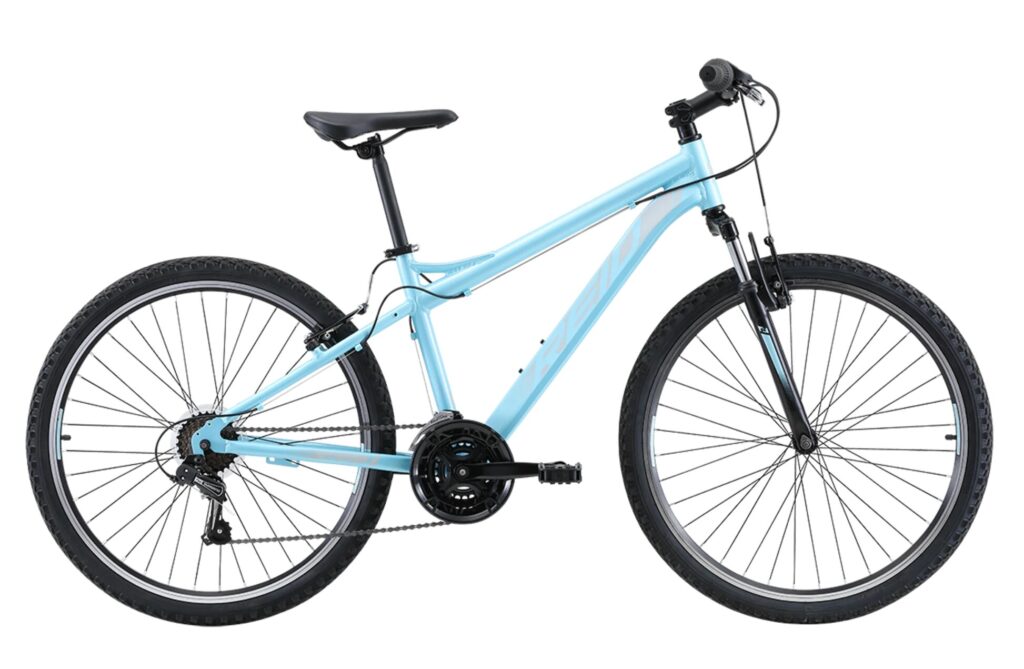When you’re thinking about hitting the trails, you might find yourself caught in the great bike debate: trail bike vs. mountain bike. You’re not alone in this conundrum – countless enthusiasts wrestle with the same question. Understanding the key differences between these two types of off-road cycles can elevate your biking experience and help you conquer any terrain. This article will guide you through a detailed comparison, equipping you with all the knowledge needed to make an informed decision.
Are you ready to dive into an exploration of each bike’s unique features, performance abilities, and suitability for different terrains? Get set for a thrilling ride as we dissect every aspect that separates a trail bike from a mountain bike. Think of this as your personal roadmap towards achieving biking mastery, no matter where your adventurous spirit may lead you!
Understanding Different Types of Bikes
| Aspect | Trail Bike | Mountain Bike |
|---|---|---|
| Terrain | Versatile, handles a variety of trails and conditions | Primarily for challenging and rugged terrains |
| Suspension | Typically full suspension | Can be full suspension or hardtail |
| Suspension Travel | Usually around 120mm-150mm | Varies widely, can be 80mm-200mm or more |
| Frame Design | Lighter, more agile | Heavier, designed for stability and durability |
| Riding Style | Balanced for climbing and descending | Focuses on descending and technical riding |
| Climbing Efficiency | Decent climbing capabilities | Less efficient climbing due to heavier frame |
| Downhill Performance | Good for most trails | Excellent on steep descents and rough trails |
| Speed | Generally faster on smoother trails | Slightly slower on technical, rough terrain |
| Technical Features | May have dropper post and modern trail bike geometry | May have more rugged components for durability |
| Recommended Use | Ideal for general trail riding and all-day adventures | Suited for aggressive downhill and rough terrains |
| Common Activities | Cross-country, trail riding, bike parks | Downhill racing, enduro, freeride |
You’ve got to understand that not all bikes are created equal; picture a sleek trail bike, tailor-made for speed and agility, versus a rugged mountain bike, built to withstand rough terrains. Each of these pedal-powered machines has its unique design features and performance attributes. A trail bike is typically light and nimble, designed for fast-paced rides along relatively smooth paths or roads. It’s sporty and efficient, perfect for those seeking thrill in high-speed cycling. On the other hand, imagine a mountain bike – it’s your rugged companion that’s engineered to conquer rocky trails and steep inclines with ease. The robust frame offers stability while the wide tires provide extra grip on uneven surfaces.
Now let’s take a closer look at these two types of bikes. Your trail bike often comes equipped with skinny tires and minimal tread pattern which allows for less rolling resistance – meaning you can go faster with less effort! It usually has fewer gears since it doesn’t need to navigate extreme terrain changes like a mountain bike does. Now shift your gaze to the mountain bike; its strength lies in its versatility – it’s the Swiss army knife of bikes if you will! Its wider tires have aggressive treads for excellent traction over rocks, roots, mud – you name it! The sturdy frame can handle shocks better than any other type of bicycle out there making it ideal for off-road adventures.
Key Features of Off-Road Bicycles
Ready to tackle the rough and tumble of off-road cycling? Let’s dive into the key features that set these rugged two-wheelers apart! First up, suspension. A trail bike typically has full suspension, meaning both the front and rear wheels can absorb impact. This makes for a smoother ride over roots, rocks, and other obstacles you’ll encounter on the trails. On the other hand, many mountain bikes are hardtails – they only have front suspension. This makes them more efficient climbers but less forgiving on rocky descents.
Next let’s talk about geometry – how the frame of your bike is shaped. Trail bikes usually have a relaxed geometry with a slacker head angle (the angle between the forks and ground). This gives you more control when going downhill at speed. Mountain bikes often have steeper angles which make them agile and responsive – perfect for tight turns in technical terrain. Both types come with wider tires for better grip on loose surfaces. So whether you’re after adrenaline-fueled downhill runs or testing your skills on technical climbs, understanding these key features will help guide your choice towards finding that perfect off-road companion!
Comparing Performance and Handling

When it comes to comparing performance and handling, it’s like pitting a graceful gazelle against a nimble mountain goat – each shines in its own terrain. Trail bikes are known for their agility and quick responsiveness, similar to the gazelle. They’re built with lightweight frames that allow you to maneuver more easily through tight singletrack trails. The slacker head angle provides stability at high speeds while the steeper seat tube angle allows for efficient pedaling on climbs. You’ll appreciate these features if you prefer fast-paced rides where precision steering is key.
In contrast, mountain bikes are akin to our sturdy mountain goat – they’re designed for rougher terrain where strength and durability take precedence over speed. Their robust design includes wider tires that provide excellent traction on loose or slippery surfaces, making them ideal for challenging descents or rocky paths. The longer suspension travel helps absorb shocks from big hits or drops off ledges, giving you a smoother ride even in gnarly conditions. If your thrill-seeking heart yearns for rugged adventures and technical trails, then the mountain bike could be your perfect match.
Suitability for Different Terrains
Imagine ripping through the serene forest, your tires crunching over fallen leaves and stray pebbles, or picture yourself conquering a rocky hillside, every pedal stroke propelling you closer to the summit – both of these thrilling experiences hinge greatly on choosing the right set of wheels for different terrains. If you’re seeking a versatile ride that can handle forest paths and light trails with ease, then going for a trail bike would be an ideal choice. These bikes are designed to be jack-of-all-trades in that they have the capacity to cope with a wide variety of conditions and routes. Their balanced features offer good climbing and descending capabilities which is perfect when you want to explore diverse landscapes.
On the other hand, if your dream is about dominating steep hillsides or maneuvering tough technical trails with rock gardens or root networks, then investing in a mountain bike is your ticket to achieving those goals. Mountain bikes are built specifically for challenging terrains; they boast superior suspension systems and tire grip that allow them to tackle obstacles most other bikes would shy away from. So next time when you’re faced with this decision remember: if versatility across different settings is what you seek go for a trail bike; but if pushing limits on rugged terrain excites you more than anything else – opt for a mountain bike.
Making an Informed Purchase Decision
Choosing the right set of wheels isn’t just about chasing thrills, it’s also about making a smart investment that matches your riding style and terrain preferences. It’s about understanding the subtle differences between trail bikes and mountain bikes, knowing their strengths and weaknesses, and seeing how these align with your riding aspirations. By doing so, you’re not only optimizing for an exhilarating biking experience but also setting yourself up for success by ensuring that every ride is a step towards mastery.
When deciding on whether to purchase a trail bike or a mountain bike, consider the factors such as where you’ll be riding most often (trails or mountains), your preferred speed (fast-paced or leisurely), and your tolerance for rough terrains (high or low). If you lean more toward technical descents with tight turns or if fast-paced action in varied environments speaks to your spirit of adventure, then a trail bike may be best suited for you. On the other hand, if you envision yourself tackling steep inclines on rugged terrains or enjoy long rides filled with scenic views at a relaxed pace, then opting for a mountain bike could be the better choice. In essence, choosing wisely will help pave your path to becoming an accomplished rider.
Frequently Asked Questions
What is the average cost of a trail bike compared to a mountain bike?
You’re probably wondering about the cost difference, right? On average, trail bikes can range from $500 to $3000 whereas mountain bikes typically cost between $400 and $10,000. It’s all about what fits your biking style best!
Is it easier to perform tricks on a trail bike or a mountain bike?
Ready to show off some tricks? Typically, you’ll find it easier on a mountain bike. They’re designed for agility and control, making them perfect for those thrilling stunts you’re itching to master.
How different is the maintenance required for a trail bike and a mountain bike?
Both trail and mountain bikes require regular maintenance, but the specifics can differ. Trail bikes often need more frequent checks on their suspension systems, whereas mountain bikes demand consistent brake and tire care. Keep mastering your craft!
Are there specific racing competitions for trail bikes and mountain bikes?
Absolutely! You’ll find specific races for both trail bikes and mountain bikes. These competitions challenge your skills, endurance, and speed – an excellent opportunity to master your biking prowess. So gear up and hit the trails!
Can I use a trail bike for commuting in the city?
Absolutely! You can use your trail bike for city commuting. It’s sturdy, reliable and built to handle various terrains, making it a great choice for navigating through urban landscapes. Just remember to ride safely!
Conclusion
In sum, your choice between a trail bike and mountain bike hinges on your riding needs. Remember, it’s all about where you’ll be riding and what kind of performance you’re after.
So don’t rush into buying. Take the time to explore different models and find one that fits your style perfectly. It’s not just about getting from point A to B; it’s about enjoying every moment of the ride!
Also Read: Are Ozone Bikes Good? Complete Guide






